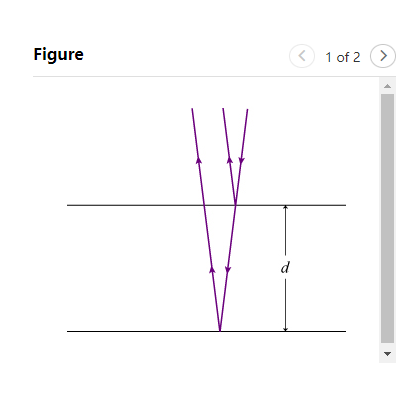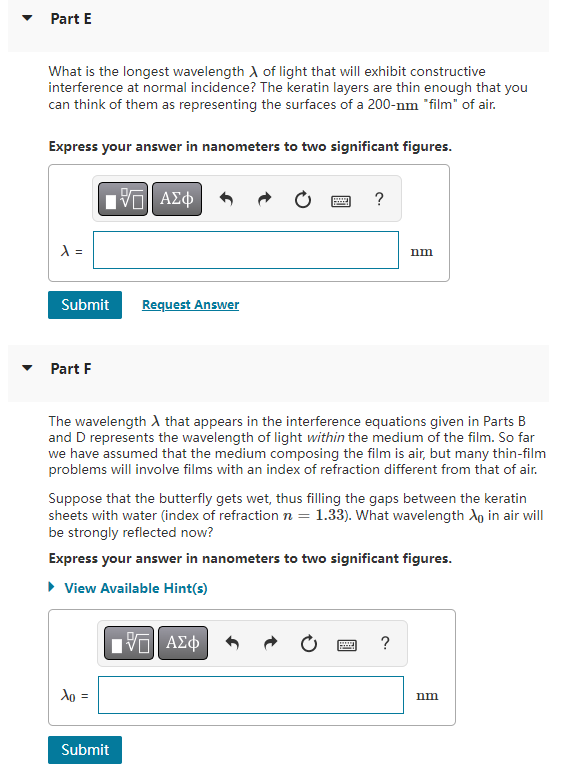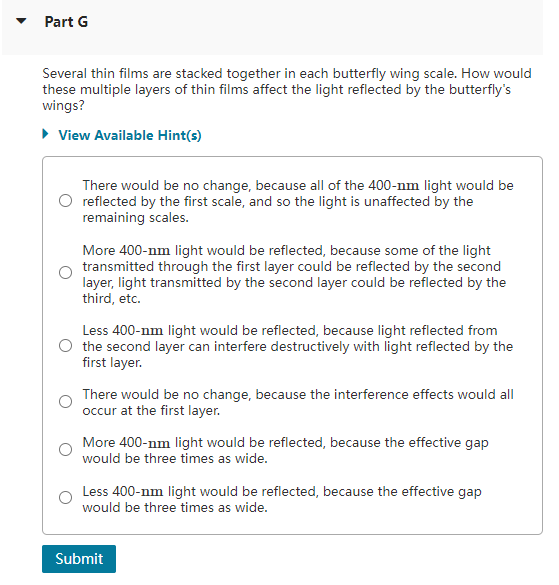Home /
Expert Answers /
Physics /
figure-what-is-the-longest-wavelength-lambda-of-light-that-will-exhibit-constructive-inter-pa841
(Solved): Figure What is the longest wavelength \( \lambda \) of light that will exhibit constructive inter ...
Figure
What is the longest wavelength \( \lambda \) of light that will exhibit constructive interference at normal incidence? The keratin layers are thin enough that you can think of them as representing the surfaces of a 200-nm "film" of air. Express your answer in nanometers to two significant figures. Part F The wavelength \( \lambda \) that appears in the interference equations given in Parts B and \( D \) represents the wavelength of light within the medium of the film. So far we have assumed that the medium composing the film is air, but many thin-film problems will involve films with an index of refraction different from that of air. Suppose that the butterfly gets wet, thus filling the gaps between the keratin sheets with water (index of refraction \( n=1.33 \) ). What wavelength \( \lambda_{0} \) in air will be strongly reflected now? Express your answer in nanometers to two significant figures.
Several thin films are stacked together in each butterfly wing scale. How would these multiple layers of thin films affect the light reflected by the butterfly's wings? View Available Hint(s) There would be no change, because all of the \( 400-\mathrm{nm} \) light would be reflected by the first scale, and so the light is unaffected by the remaining scales. More 400-nm light would be reflected, because some of the light transmitted through the first layer could be reflected by the second layer, light transmitted by the second layer could be reflected by the third, etc. Less \( 400-\mathrm{nm} \) light would be reflected, because light reflected from the second layer can interfere destructively with light reflected by the first layer. There would be no change, because the interference effects would all occur at the first layer. More 400-nm light would be reflected, because the effective gap would be three times as wide. Less \( 400-\mathrm{nm} \) light would be reflected, because the effective gap would be three times as wide.
Expert Answer
Solution - ?= 2nd / m here n is the index of refraction, d is the thick


